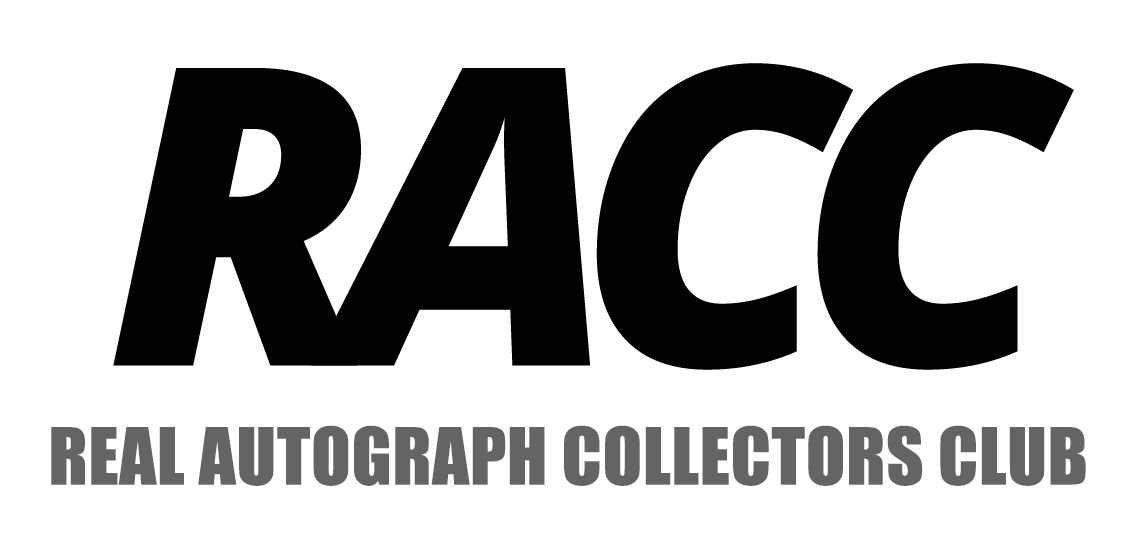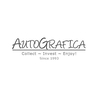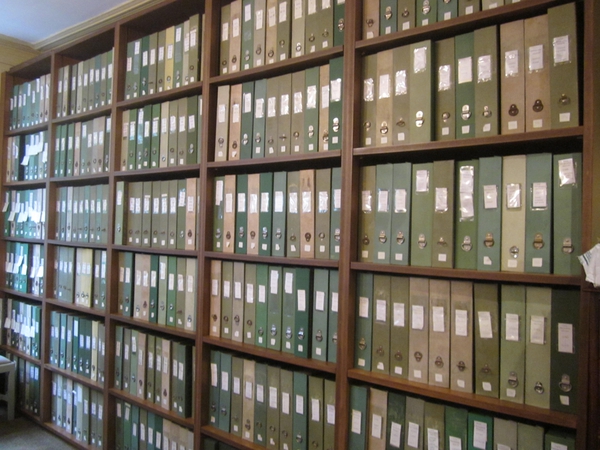Autografica
- Home /
- Autografica /
- Blog
The safe storage of autographs and signed photos (Part 1 of 2)
Part 1, Storage of photos and signatures in sleeves.
We have put this article together after many requests from customers about the right and wrong way to store their much loved autograph collection. All too often we have seen wonderful vintage items that have been badly stored or displayed, which has reduced them to second rate junk suitable only for the 99p bargain bin!
It takes little effort to store them in such a way so that in ten years time they will still look as good as they do today. If you are spending good money on autographs, and intend to pass them on to others, or perhaps cash them in as an investment later, then please take the time to store them with care, we promise you it will pay off!
We are only going to cover the storage of autographs and signed photos within sleeves on these pages, as the storage, conservation, framing, mounting and repair of these things will be covered in a separate article. The article may seem a little too technical at times, but we believe that by giving you the facts, you are far less likely to but or use the wrong products.
So how do you currently store your collection? Our money is on PVC sleeves and ring binders? Or maybe just a cheap chain store folder, or worse an old cardboard box? Well we are sure that you won’t be surprised to hear that all of these methods are degrading your collection as we speak!
So let’s start with those PVC sleeves as these will be doing the most harm to your collection. The most common type of plastic sleeve is made from PVC (poly Vinyl chloride) or at least a very similar material which will mean that it has had a ‘plasticizer’ added to it during manufacture. This ‘plasticizer’ is what keeps the sleeve flexible, the more they add, the more flexible (plastic) it becomes, but unfortunately for us it also means that it has a similar effect on many of the inks used to sign the autographs stored within them, as the plasticizer acts as a kind of solvent on the ink, just as a solvent will soften paint.
This effect is particularly noticeable with paint pens and metallic type markers, as the ‘Plasticizer’ will absorb some or even all of the ink, which then results in the ink partially attaching itself instead to the plastic sleeve rather than your photo. The same plasticizer can, over time also affect certain photographs and images too, so you could end up with not just a disappearing signature, but also a disappearing or distorted image as well!
In addition, during the manufacturing process PVC passes through rollers coated in fatty acids (to stop the PVC from sticking to them). Resulting in both sides of the pockets (and this includes top loaders) being contaminated, and we don’t want fatty acids coming into contact with our autographs do we!
Note. You may sometimes read that you can ‘smell’ the cheaper PVC sleeves, and that proper acid free sleeves do not have that smell, but that is not entirely incorrect, and could well be something to do with the ‘fatty acids’ mentioned above!.
How many items should I put into each sleeve? Ideally just one, but we don’t live in an ideal world, so two photos back to back should be your maximum. If you do this, you should make sure that between the photos you place an acid and lignin free divider. Why? Well, photographic paper can contain both acid and lignin, and these chemicals degrade the paper turning them yellow (this is why old newspapers go yellow). So having them back to back will age the photographic paper twice as quickly, turning your treasured autographs yellow even more quickly. Storing only two photos per sleeve will also reduce the risk of scratching each image on removal.
If you store several photos in each sleeve, you may well have noticed the way some signatures are reproduced onto the backs of other photos. This is again caused by the chemicals within the photo papers acting upon the inks, and is yet another reason why you should only ever store 2 signed photos back to back in one sleeve.
We don’t recommend storing more than one album page or signed card per sleeve either, as we have seen the effects of a high acid piece of paper on another when stored in this situation. Some inks can also transfer from one page to another, so this is also something to consider. There are special multi pocket sleeves for the smaller album pages etc, so you don’t have to waste one A4 sleeve per item.
Because you may be storing only two photos per sleeve, it can be worthwhile adding a divider to help prevent damage from bending and cross contamination . If you are going to do this, ensure that the stiffeners you use are again acid free; otherwise you are simply taking a backward step. You can buy acid and lignin free dividers for this purpose, and these are normally available from the same suppliers as the sleeves. See my note on this at the end.
The solution to the sleeve problem is to use sleeves which are made from Polyester which is both stronger, optically so much clearer, and most importantly do not contain those horrid plasticizers or fatty acids!
Polyester (synthetic as opposed to natural) is a type of plastic, most commonly sold under the trade name ‘Mylar’ although you won’t normally find that name being used. These polyester sleeves are more costly, but in our experience are stronger and will last far longer than those cheap plastic sleeves from Staples or elsewhere and of course won’t harm your valuable collection either.
You will find polyester sleeves much harder to locate, and the staff in Staples certainly won’t have a clue what you are talking about if you ask for polyester or Mylar sleeves, so don’t bother asking! You might well find ‘copy safe’ sleeves, although we have never seen any which state that they are polyester, and we believe that these are promoted as ‘copy safe’ for the office market, whereby the wording ‘copy safe’ is referring to its safe storage of photocopied items rather than the safe storage of your valuable signed photos! we no doubt expect they are do not carry any kind of guarantee that might actually mean anything either! So our advice is to avoid these.
Now you might ask how do we know what a polyester sleeve looks like if we have never seen one. Well, because they are more expensive than common or garden PVC sleeves, they will normally be marked or sold as such, as they are sold with the conservation market in mind. Once you have seen a polyester sleeve and compared it to a normal PVC type sleeve you will see and feel the difference in quality immediately.
In case you are thinking about photo albums or similar, we have looked at hundreds of photo albums in many different stores, from Harrods, through specialist photo shops, down to staples and even Poundland, and all were the same:- PVC sleeves, cheap cardboard pages, or even worse those horrid pages with the sticky lines on them to hold the photos in, ughhh! If you have your collection stored in anything like this, then give yourself a slap and sort them out right now!
Note. The often used ‘top loader’ is not made from polyester, and should not be used to store your signed photographs for any length of time. They may be useful for transporting newly signed photos from a show, but that should be their limit of use. Photographs can also stick very quickly to top loaders especially if the photos are newly developed and the top loaders are newly manufactured, so be warned!
‘Top loaders’ are the hard plastic sleeves in which only the top edge is open, and are often seen at shows, or by some dealers to send items out in.
So remember, its polyester sleeves that you are looking for if you want to store photos or anything with a signature on.
One last thing, if living in an ideal world we would always handle all our stock whilst wearing lint free cotton gloves. This is because of the amount of oils and other such things that sit on our skin, which is then passed onto our precious autographs every time we handle them (did you wash your hands after eating that sticky bun!). Those fingerprints on all of your photos are there because of all that crud, and much of it will damage your photos and can become impossible to remove later. White cotton lint free gloves are easily available from any good photographic shop, one pair will not only last you a very long time, but will also prevent all that muck from attaching itself to your valuable collection.
Everything that we have written here has come from our twenty years experience of dealing with autographs, and making the kind of mistakes that we have mentioned here. You can’t bake a cake without breaking eggs as they say, and we have certainly broken a few in our time! So we hope that you will take on board what we have written and that it helps you to keep your collection in the condition that it needs to be.
We hope that you have enjoyed this article and that it has been both interesting and informative. We will be covering storage, conservation, presentation display, and mounting and framing in other articles, so keep watching!
If you would like to promote this guide, please do so only by adding a link directly to the article here, or https://www.autografica.co.uk/free-autograph-guides/autograph-storage
Article copyright Garry King and Autografica 2013
Visit my web site:
https://www.autografica.co.uk

Autografica
Autografica is owned and run by Garry King.
Autografica started in the late 1980's as a by product of Garry's collecting habits, and became a full time business in 1993 when Garry finally sold his then retail business. During these past 20+ years Autografica have become one of the best-known autograph dealers in the UK, and now have contacts all around the world. Garry has attended all the relevant UACC authentication and appraisal courses both here and in the USA, as well as organizing and running a very successful AFTAL backed course for dealers and collectors here in the UK.
Garry also started the well known 'Autographica' event (note the very slightly different spelling) with Dave Phillips, the first event being in Northampton in 2000. The event soon became the largest of it's kind in the world, but the online autograph business at Autografica needed more time, so the share of the event was sold to Showmasters, and it continues under their guidance to this day.
Autografica now supply items to customers all over the world both trade and retail, and are one of a very small number of people whose expert testimony is accepted by courts in autograph fraud cases. We also offer authentication help to other dealers and auction houses in the UK.
Autografica have been featured on many local and national radio and TV stations including the BBC’s ‘Inside Out’ (twice), The Real Hustle, The One Show, Pawn Stars UK, Posh Pawn and two series of Fake Britain with Dominic Littlewood, the last one featuring a recent court case which you can find here).
Radio includes many local BBC and independent radio stations, Chris Evans Drive time show, The Steve Wight show, Venessa Feltz show as well as local and national papers and magazines, including the Times, The Guardian and a 4 page spread in F1 magazine.
Stats
Join the RACC Facebook Group!
The Real Autograph Collectors Club (RACC) on Facebook is the largest community of in person autograph collectors and fans in the world, with 25,000 members and growing!
When you click on links to various merchants on this site and make a purchase, this can result in this site earning a commission. Affiliate programs and affiliations include, but are not limited to, the eBay Partner Network.
Useful Links
WORLDWIDE RACC (Our Top Cities)
New York, NY
USA
Los Angeles, CA
USA
London
United Kingdom
Chicago, IL
USA
Toronto, ON
Canada




